Zwift versus Rouvy - how do the two virtual riding platforms stack up?
To determine which aligns best with your objectives, we pit Zwift against Rouvy—two leading indoor cycling apps providing group rides, workouts, races, and social interactions in a virtual environment
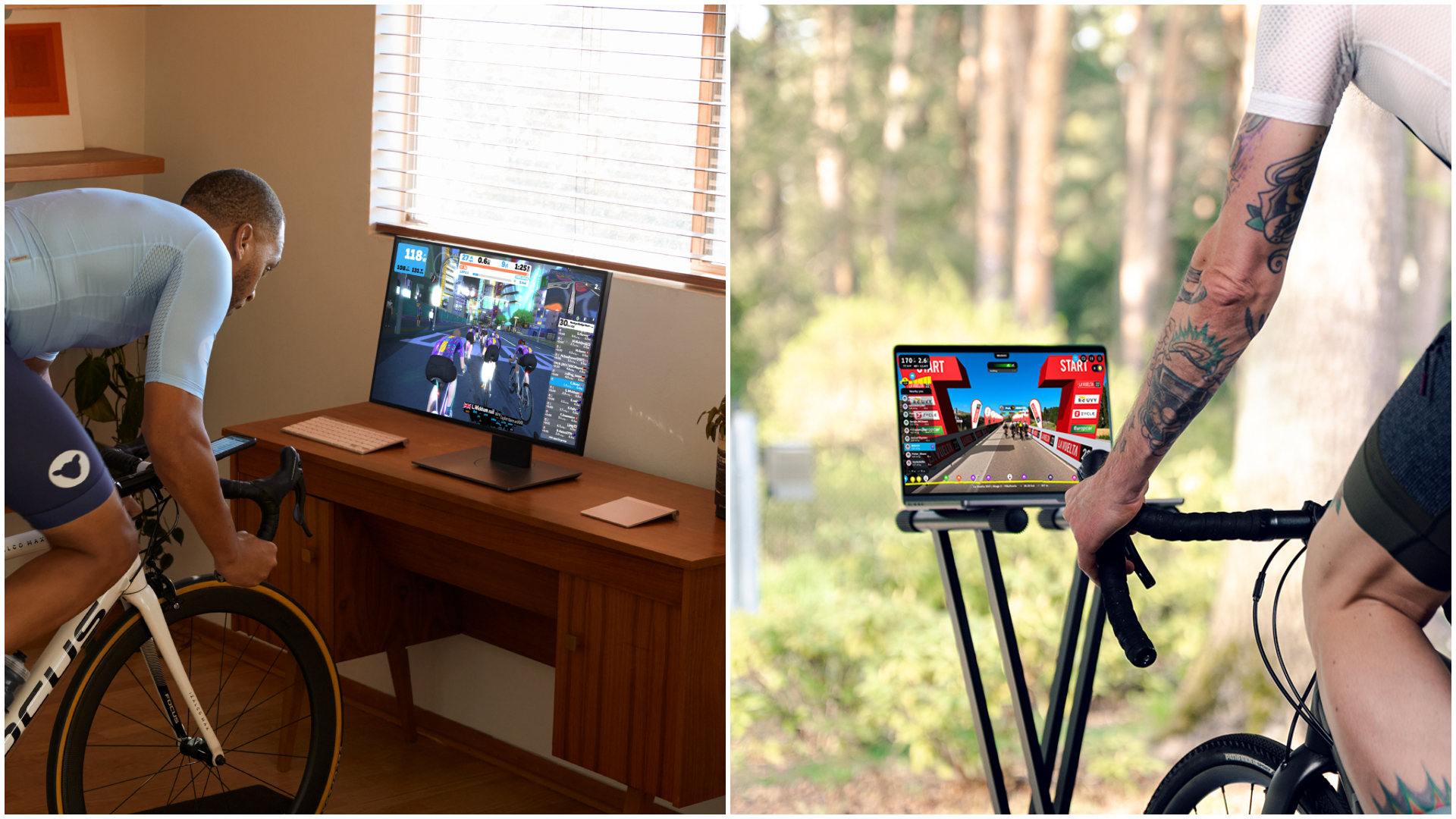

Done are the days of droning away in a dust-filled deprivation chamber of dread and despair. Past are the indoor training sessions of old when the only sound drowning out the screams of searing pain was the indoor trainer’s incessant moan. Enter the age of smart trainers, virtual cycling platforms, and the increasing options for avid cyclists seeking a safe, stimulating, and comfy off-season alternative.
The first, Zwift, burst on the scene in 2014 and consistently gained a loyal following fueled by the notion of "Fun is Fast." The indoor cycling set, starving for a less unappealing replacement for their outdoor freedom, flocked to the Zwift metaverse in droves. The digital roads of Zwift's Watopia soon came to look like rush hour in Amsterdam.
Zwift grew to become the standard by creating a product to appease the masses - and they are good at it. At the height of the pandemic, on a sleepy day in January 2021, there were over 43,000 users simultaneously cruising Zwift's simulated parcours. But attempting to satisfy everyone can result in leaving some people unfulfilled.
Some discerning indoor cyclists, somewhat dissatisfied by Zwift's fictional worlds and video-game graphics, missed the allure of their outdoor visuals and searched for something more realistic. In 2017, the Czech company Rouvy entered the virtual cycling landscape to fill the void.
Rouvy aims to "Bring the Outdoors Home" by allowing users to ride, race, and train on the world's most scenic routes. Rouvy utilizes real-world videos of iconic scenery, climbs, and race courses worldwide in its route database, making riders feel like they're really climbing L'Alpe-d'Huez, not the simulated Alpe du Zwift.
For some riders, it's an essential distinction that has allowed Rouvy to carve out a niche. Many other virtual platforms stand beside Zwift, like TrainerRoad, Bkool, Wahoo SYSTM (was Sufferfest), indieVelo, and MyWhoosh. Numerous alternatives exist, each with pros, cons, and a loyal user base.
However, Rouvy and Zwift both do what they do well, making it a compelling comparison for the beginning indoor enthusiast and seasoned "Indoor Specialist" alike.
Get The Leadout Newsletter
The latest race content, interviews, features, reviews and expert buying guides, direct to your inbox!
Zwift versus Rouvy: getting started
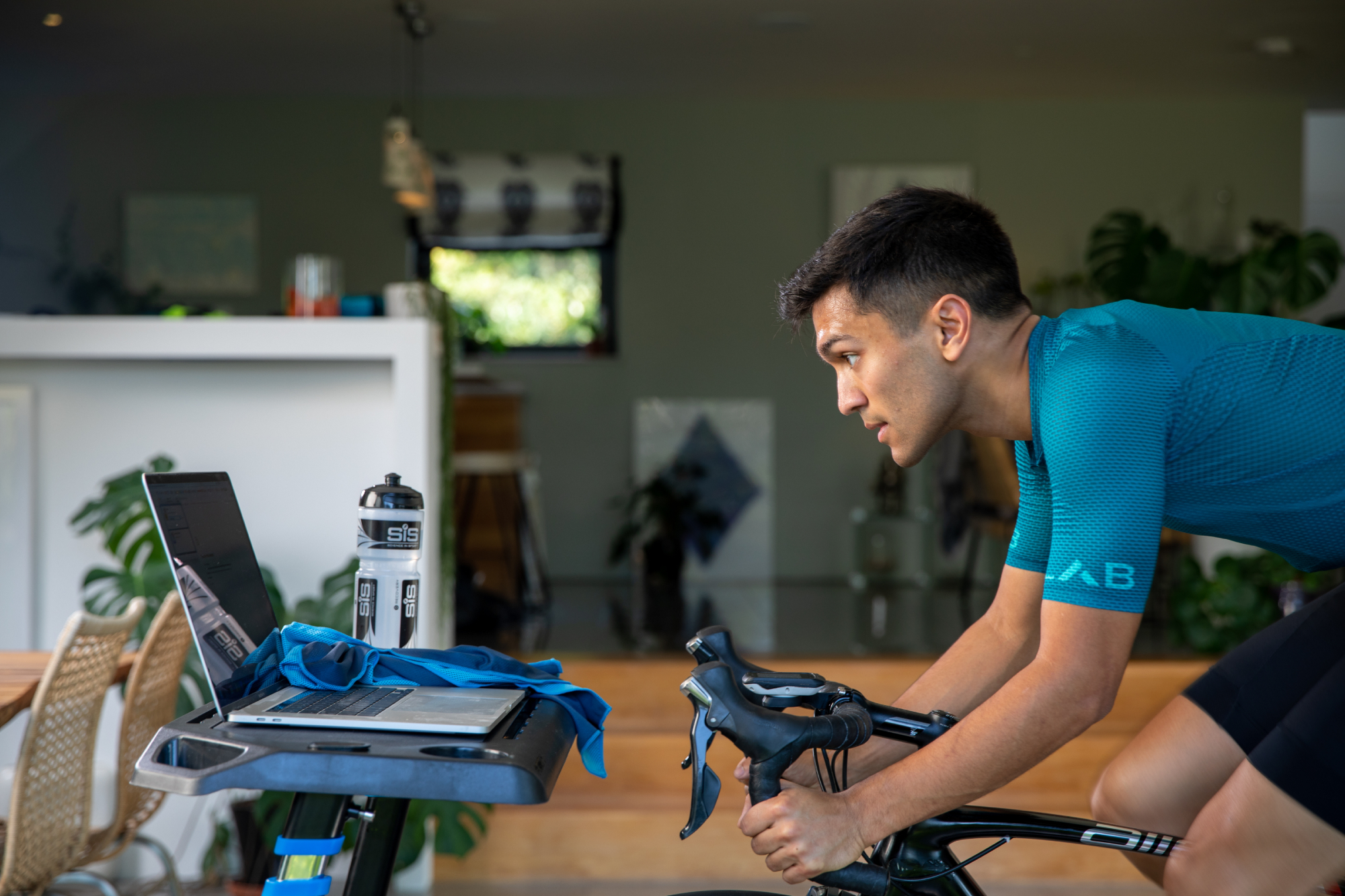
Most virtual training platforms share standard features grounded in real-world cycling and use similar technology. It ensures that the computer connectivity and compatibility with top-tier turbo trainers, smart bikes, and exercise bikes will be consistent regardless of your chosen platform.
A smart indoor bike trainer is crucial to optimize your experience on Zwift and Rouvy. Direct-drive indoor trainers offer built-in power meters and variable resistance. These functions gauge your power output and relay it to the app, propelling your virtual avatar. The variable resistance mimics real-world terrains, intensifying during climbs and easing on descents for a more authentic virtual ride.
Similar to other platforms, Zwift and Rouvy allow you to connect your smart trainer to iOS, Android, or Windows devices. It enables you to ride with or compete against cyclists worldwide from the comfort of your home.
Once you've completed your setup, with your fans and towels positioned, it's time to ride. Downloading and registering both apps is straightforward, but the compelling nuances of the virtual riding experience are not.
Zwift versus Rouvy: virtual riding
Zwift

Virtual riding is the essence of indoor riding platforms like Zwift and Rouvy, and each excels at what they do.
When it comes to graphics, the key is user experience, not just photorealism. While Zwift may not excel in photorealistic graphics, its aim is different. Instead, Zwift concentrates on crafting a unique virtual world, and its graphics mirror this focus.
Zwift took an innovative approach, prioritizing a graphic style that encourages people to ride rather than mimicking real-world visuals. By this metric, Zwift excels and outpaces its competitors. The graphics may not resemble the real world, but are smooth, intuitive, and compatible with low-end hardware. This underappreciated feature is one of Zwift's standout strengths.
There are over 100 routes on Zwift's fictional worlds to virtual ride, or you can join one of the many group ride events scheduled throughout the day. Many users join one of nine popular Zwift Robopacers that attract a steady following at set paces ranging from beginner (1.1 watts per kilo, w/kg) to expert (4.2 wkg).
Rouvy
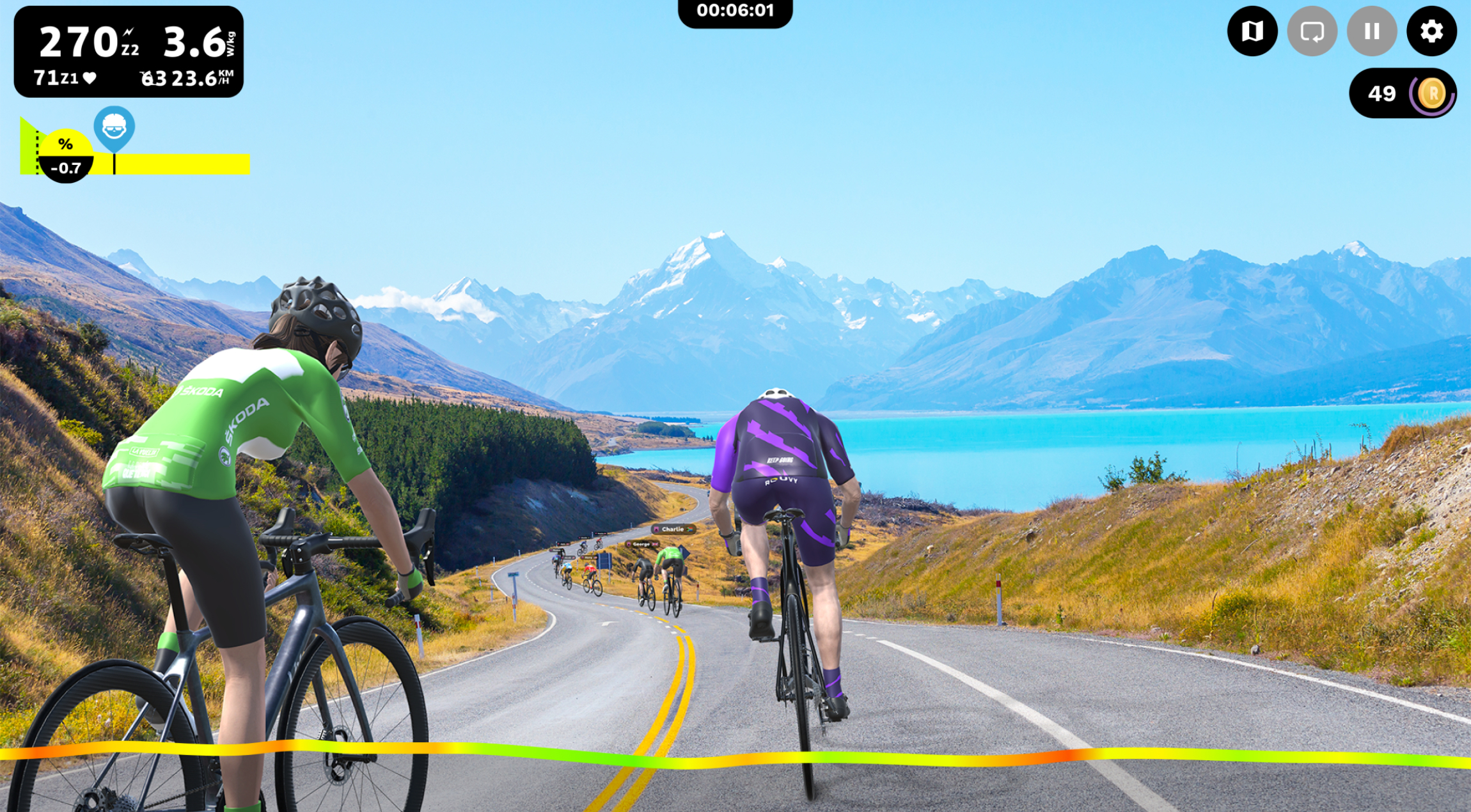
Rouvy offers diverse routes to suit various cycling tastes, from Belgium's iconic cobbled climbs to the French Alps' challenging mountain passes and Scotland's scenic coastlines. Whether you love climbing, prefer flat terrains, or want a relaxed ride through beautiful landscapes, Rouvy has you covered.
The platform frequently updates its route selection, adding new and exciting terrains to keep your training fresh and engaging. The variety enhances your training experience and lets you virtually explore some of the world's most stunning cycling destinations, making Rouvy a top pick for both training and virtual adventure.
Riders can choose over 9,100 curated, high-quality routes representing 100 countries, while the app offers an extensive 245,000-plus km of rideable landscapes. The inclusion of 975 Strava Live segments adds a convenient feature.
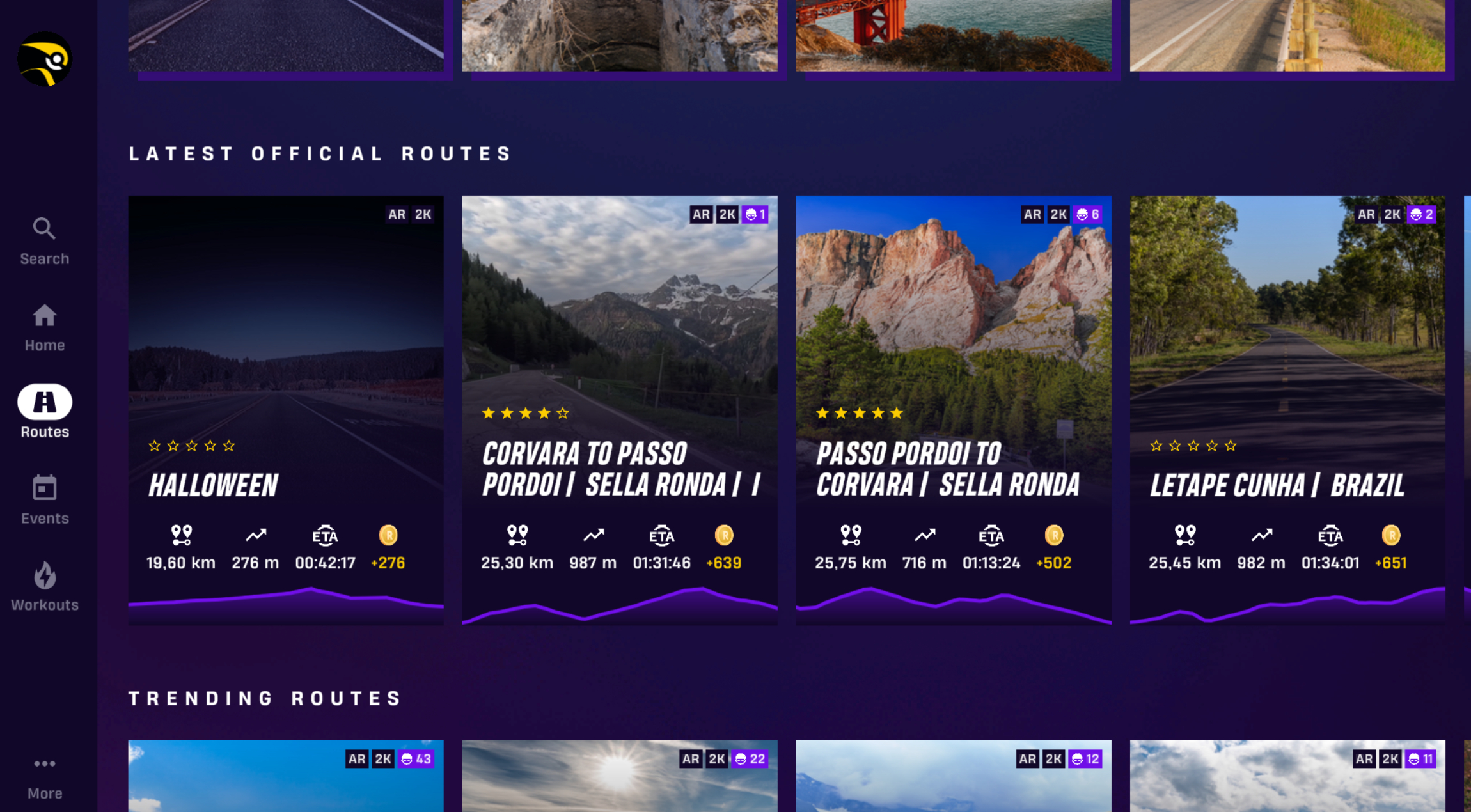
Rouvy takes realism to the next level with its cutting-edge Augmented Reality (AR) feature. With augmented reality, 3D riders appear within actual video footage, merging the virtual and real worlds. The feature enhances social interaction by letting you ride with other virtual cyclists and offers a more immersive experience by situating your avatar in a real-world video setting. Rouvy boasts over 1,000 AR routes in 45 countries, covering more than 30,000 km and 622,000 m of elevation.
Users can upload their videos, adding to an extensive library of choices. If no videos exist for a location, you can still ride there using Rouvy's Route Editor. You can film a video to create new community rides, import GPS data, and sketch a route using Google Earth. While riding without a video will only display a map marker, the climbs and descents remain accurate.
Zwift versus Rouvy: climbing
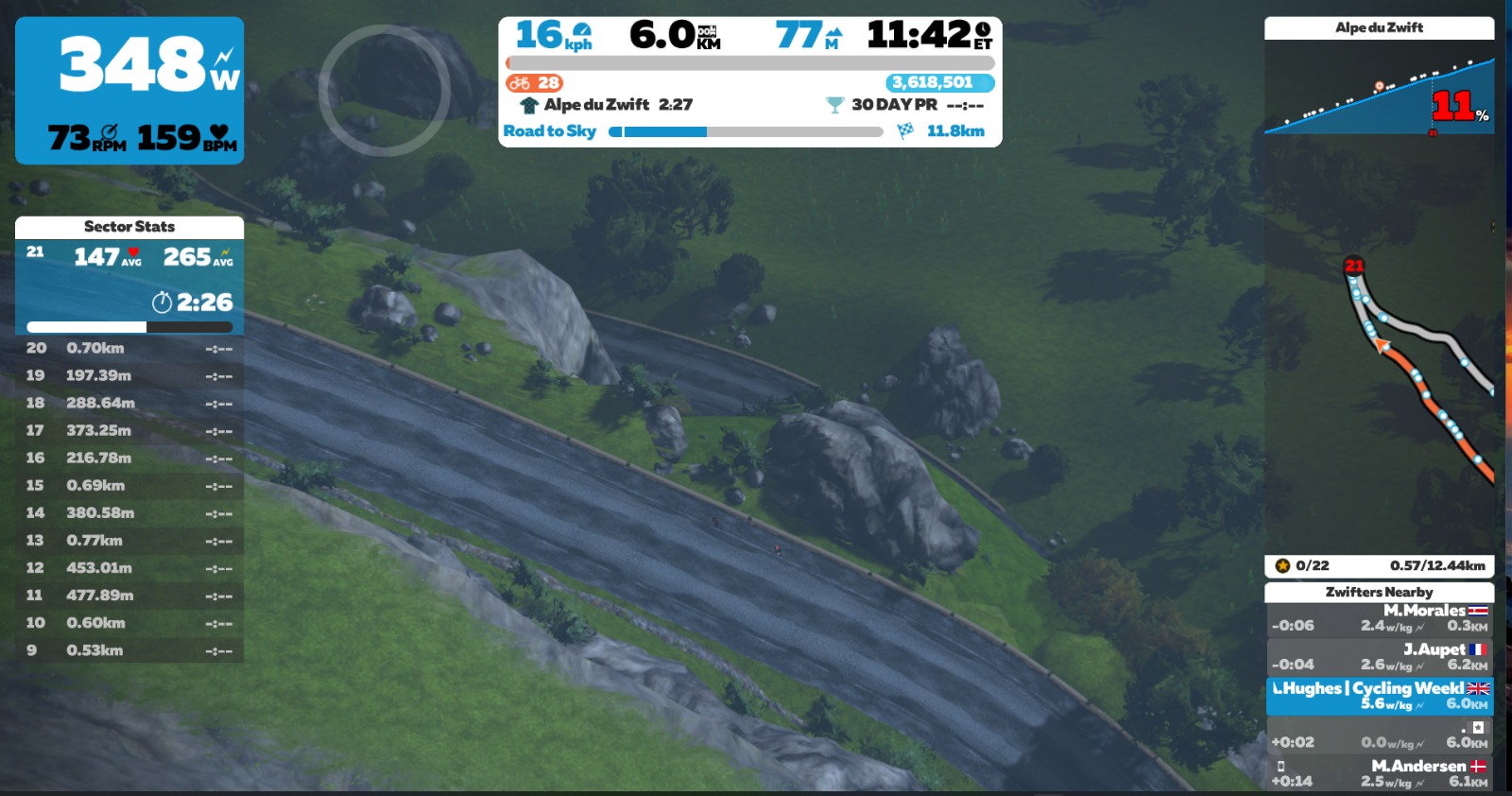
Rouvy excels in delivering an authentic climbing experience. The app uses real-world elevation data to adjust your trainer's resistance, providing a realistic climbing feel. Notable climbs include the iconic Alpe d'Huez in the French Alps, famous for its 21 hairpin turns, Mont Ventoux, a challenging ascent often seen in the Tour de France, and the stunning Stelvio Pass in the Italian Alps.
Rouvy's focus on realism ensures that each pedal stroke and gradient shift closely resembles real-world conditions, making it an excellent option for cyclists searching for genuine climbing experiences.
The feeling in your legs is every bit as authentic in Zwift's iteration of iconic climbs like Alpe du Zwift and Ven-Top, with a chance to see the Yeti for the lucky few. With Zwift's Climb portal, users can experience a rotating selection of the sport's famous ascents, complete with climb-specific HUD elements, like a map and section progress meter, but no scenery. The satisfaction of conquering the Puy de Dome is just as sweet.
Zwift versus Rouvy: training
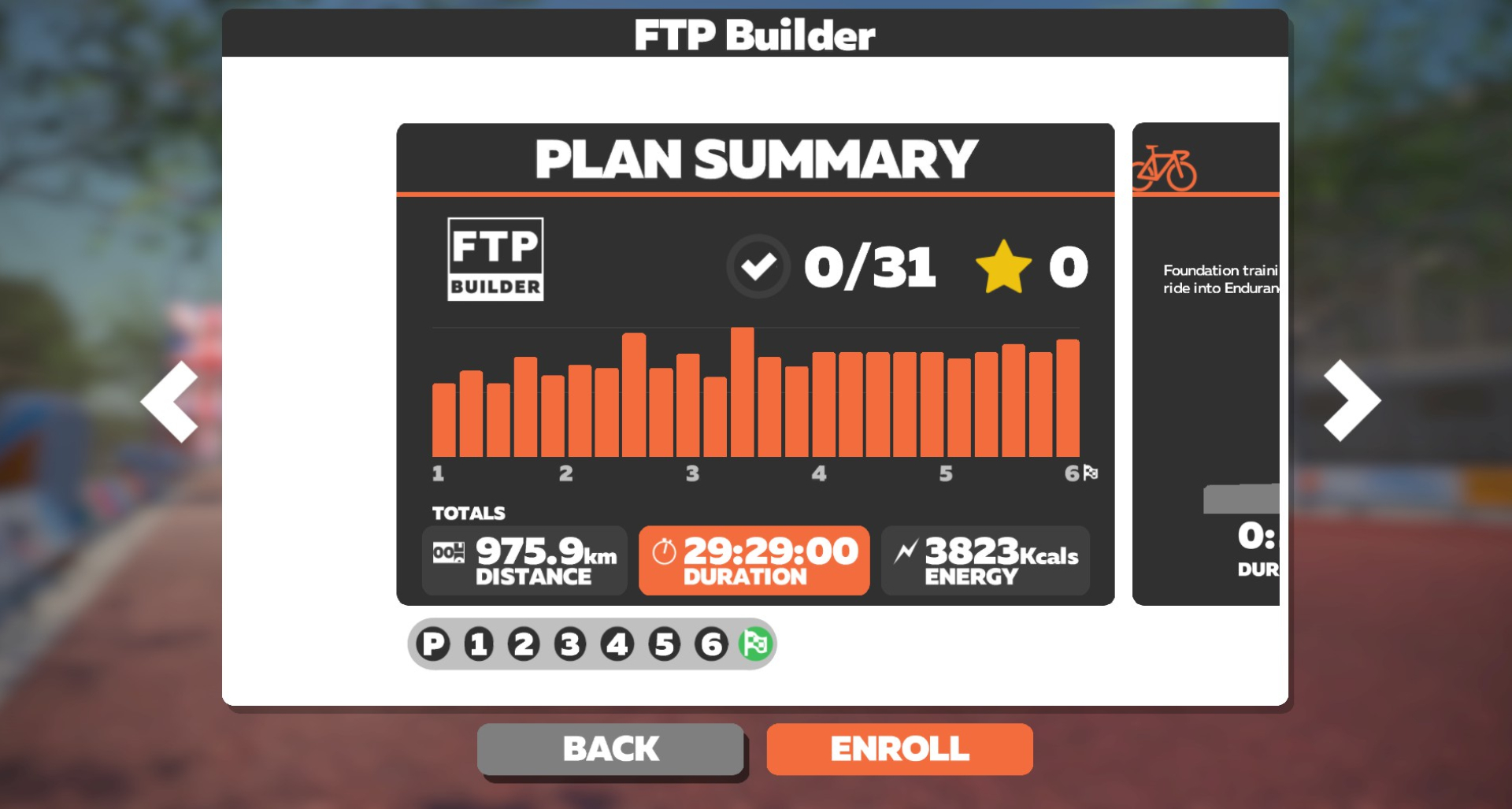
Zwift has an extensive library of over 1,000 structured workouts and cycling training plans geared for riders of all levels - if you’re interested in finding out more about which you should choose to do, we asked a cycling coach to pick out the best Zwift workouts and training plans over here. Zwift elevates indoor training through immersive experiences.
On-screen cues keep you engaged while you earn points and unlock achievements. Training in a virtual community with thousands of others, often in a group workout setting, adds an extra layer of motivation. Zwift offers custom workout-building functionality for users who want more control over their fitness demands.
Zwift consistently updates its training plans and workout database organization to help riders maximize their training benefits.
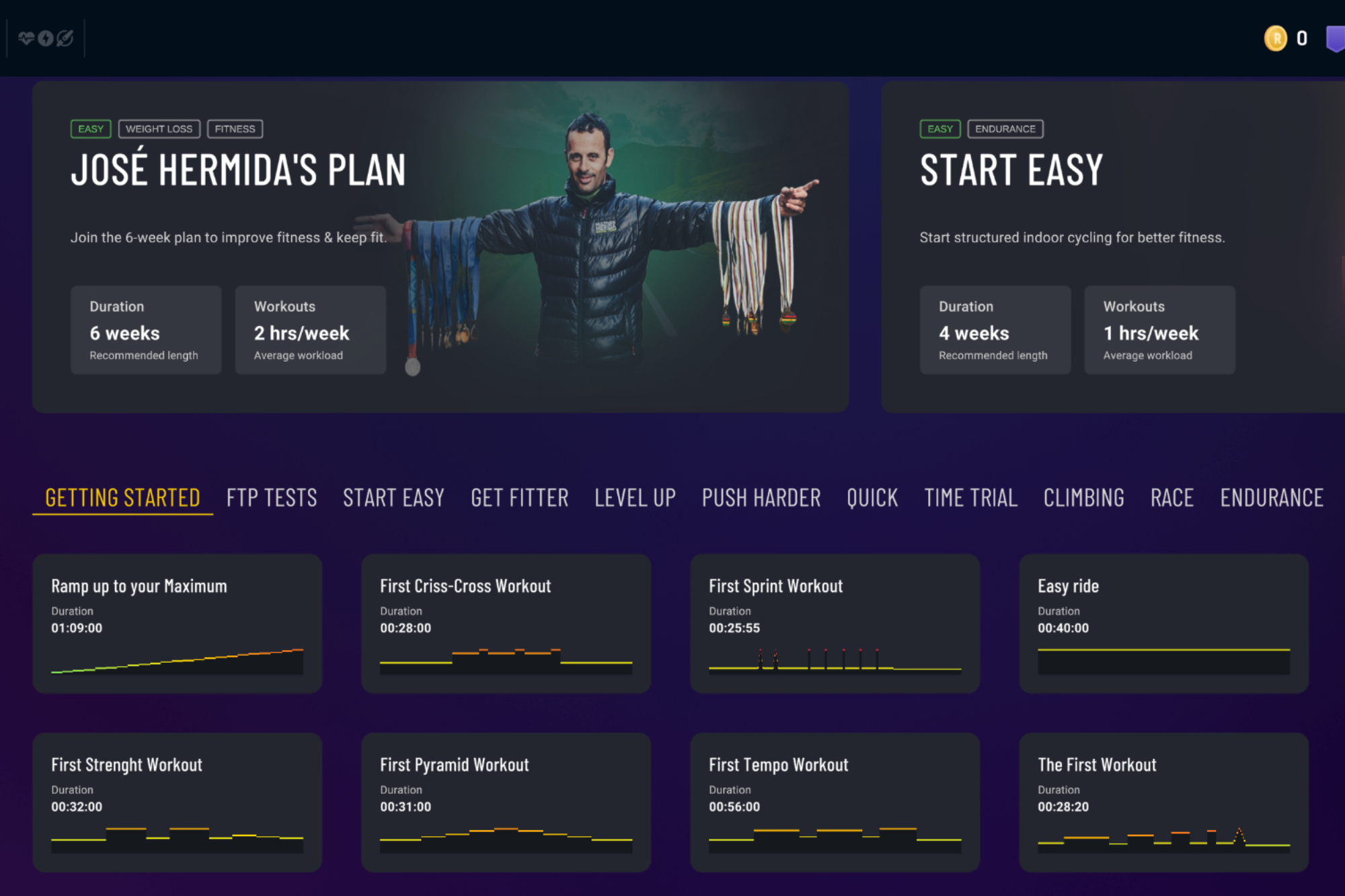
Rouvy has a more limited selection, offering four basic training plans suitable for all levels, including Andy Schleck's Get Fitter Plan. If training on La Vuelta routes motivates you, then Rouvy provides the tools you need to maximize your gains.
There are currently 291 Rouvy-created workouts and more than 550,000 added to the training database by the community.
Zwift versus Rouvy: competition and racing
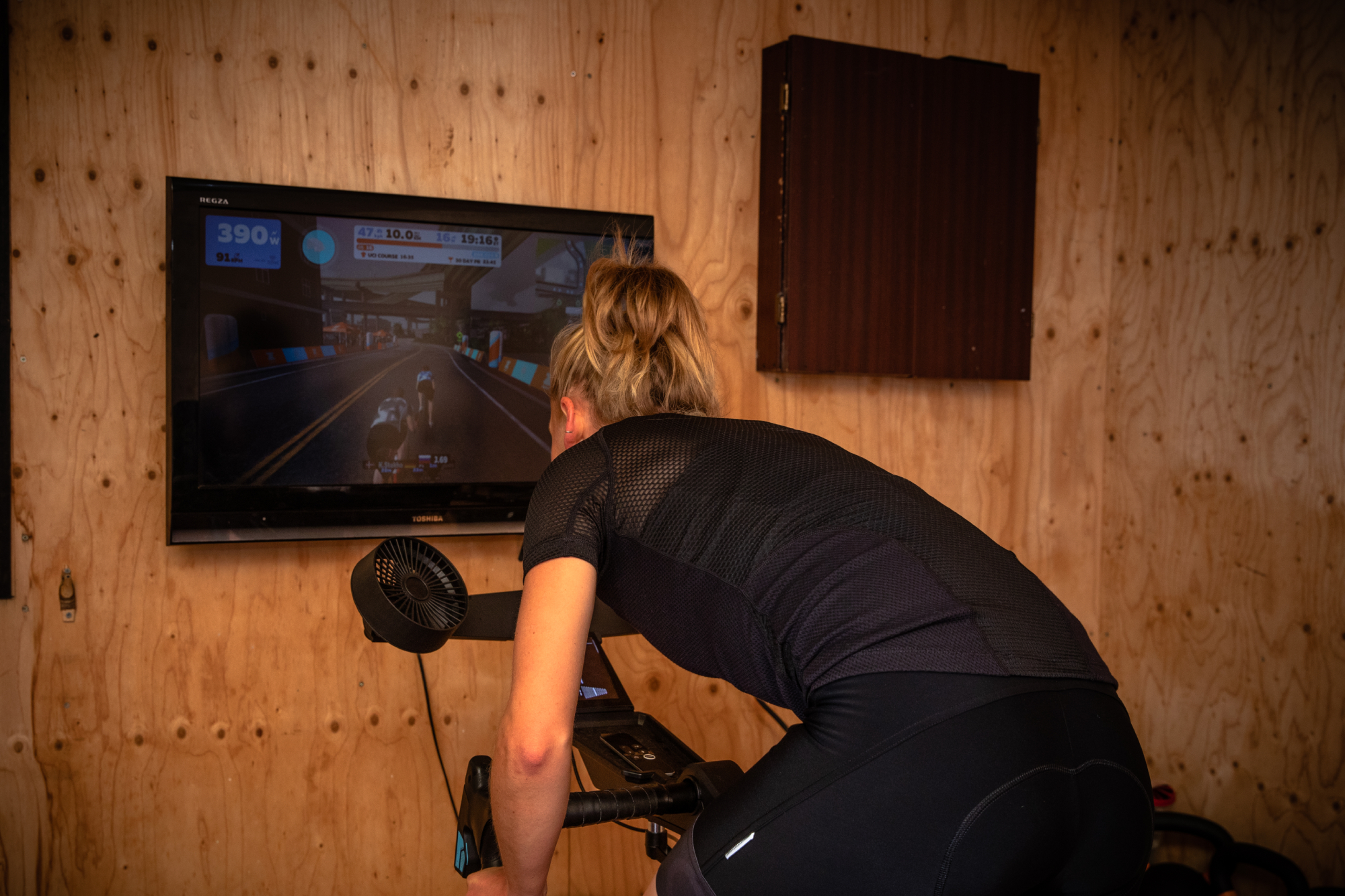
Zwift
Zwift pioneered cycling esports and laid the foundation for online competitions. At the elite level, it hosted three UCI Cycling Esports World Championship events, the Virtual Tour de France—which achieved gender parity for the first time—and an Olympic Esports Series.
Zwift has also brought cycling esports to global audiences through platforms like Eurosport, SBS, JSports, NBC Sports Gold, and GCN+. The 2023/24 Zwift Grand Prix, the company's elite-level racing series, boasts a $100,000 prize pool.
Amateur racing of all ability levels is becoming more popular. Zwift reports a 10-20% year-over-year growth in monthly competitive users. During peak times, each race averages 360 participants, and over 500 organizers set up around 1,200 races weekly.
Significantly, one-third of all users have joined at least one race, marking a roughly 50% increase. The company's flagship community series, the Zwift Racing League (ZRL), anticipates a new record with 2,000 teams registered for the upcoming 2023 indoor season, paving the way for unprecedented racer numbers in 2023/24.
The ZwiftPower website serves as a valuable tool for both Zwift racers and race organizers. Initially created by the Zwift racing community, the website collects performance data from Zwift to organize race results for individual events.
Additionally, race organizers can use ZwiftPower to set up race series and calculate cumulative results. This functionality enhances the competitive aspect of virtual cycling, providing a comprehensive platform for tracking performance and competition outcomes.
Zwift.com/racing is another source of race-related information, including the Monthly ZRacing series.
Rouvy
Since 2021, Rouvy has partnered with La Vuelta a Espana and provides a variety of races and events daily. Users can ride stages of the Grand Tours while viewing the action from home. Rouvy racers rode for over 52,000 hours, 1,220,000 km, and climbed almost 22,000,000 m during this edition of the Vuelta.
Although its race offerings are less extensive than Zwift's, Rouvy stands out with its unique feature: the ability to create custom races, something Zwift doesn't provide.
Rouvy hosts 320 official races and group rides each month and an additional 2,000-plus events generated by users and the community. Every week, Rouvy introduces a new Spotlight.
Spotlight serves as a curated collection centered on a specific theme. Each edition offers new routes, challenges, events, and extra content, all crafted to narrate a unique story. Through Spotlight, users can effortlessly explore some of Rouvy’'s finest new content, keeping them engaged and active all year.
Zwift versus Rouvy: social aspects
The social and community-oriented aspects of Zwift are vibrant and engaging. While many cyclists try Zwift for its features, they stay because of the community.
The platform has established itself as a leader in cycling-related social initiatives. The Tour de France Femmes avec Zwift has raised the gender parity bar for international female cyclists. The Diversity, Equity, Inclusion, and Belonging (DEIB) team establishes initiatives to ensure Zwift sets the standard for inclusive practices, like the Black Celebration Series and multiple charitable endeavours.
There are fewer users of the Rouvy platform, and riding can feel like an isolating experience.
Zwift versus Rouvy: the differences
Despite the critical mass of users, Zwift has other notable aspects not found on Rouvy, for better or worse. Zwift emphasizes the "Gamification" of the riding and racing experience, giving it a video game feel.
Many users enjoy the challenge of acquiring Achievement Badges when they've completed a course or one of Zwift's many challenges or missions. In-game equipment choices, individual avatar customization, and holo-replay (a visual representation of past personal bests to compete against) improve engagement.
Power Ups like the "Aero" make a racer more aerodynamic when sprinting, and the "Van" makes them better drafters. Zwift's Repack Ridge time trial course has Mario Cart-like boost pads, rewards to acquire, and obstacles to avoid.
It's all made possible by in-game steering controlled by Zwift Play, Zwift's proprietary game controller hardware. Zwift also offers its own line of smart trainers called the Zwift Hub.
In addition, the Zwift Companion App is a handy way to control the game and interact with others from the palm of your hand.
Zwift or Rouvy: the verdict
Platform choice isn't a zero-sum game in the evolving world of virtual cycling and esports. There are several options, each with its outstanding and stand-alone qualities. In the case of Zwift and Rouvy, the whole is greater than the sum of the parts. The best of both worlds!
However, if the feeling of being immersed in the realism of stunning scenery is what it takes to optimize your indoor training performance and enjoyment, Rouvy is for you. Otherwise, Zwift has a lot to offer, period.
At $14.99 / £12.99 per month for Zwift and $14.99 / ~£12.00 per month for Rouvy, a subscription to both costs less than most local crits. Why choose?

Thank you for reading 20 articles this month* Join now for unlimited access
Enjoy your first month for just £1 / $1 / €1
*Read 5 free articles per month without a subscription

Join now for unlimited access
Try first month for just £1 / $1 / €1
A physical therapist with over 25 years of experience, Christopher Schwenker is on a journey to give back to the cycling community for rewarding experiences and fulfilling relationships through the pages of his virtual cycling blog, The Zommunique, and his cycling-related non-profit, The DIRT Dad Fund.
-
 Man hands himself in to Belgian police after throwing full water bottle at Mathieu van der Poel during Paris-Roubaix
Man hands himself in to Belgian police after throwing full water bottle at Mathieu van der Poel during Paris-Roubaix30-year-old was on Templeuve-en-Pévèle cobbled sector when television pictures showed the bottle hitting him in the face
By Tom Thewlis Published
-
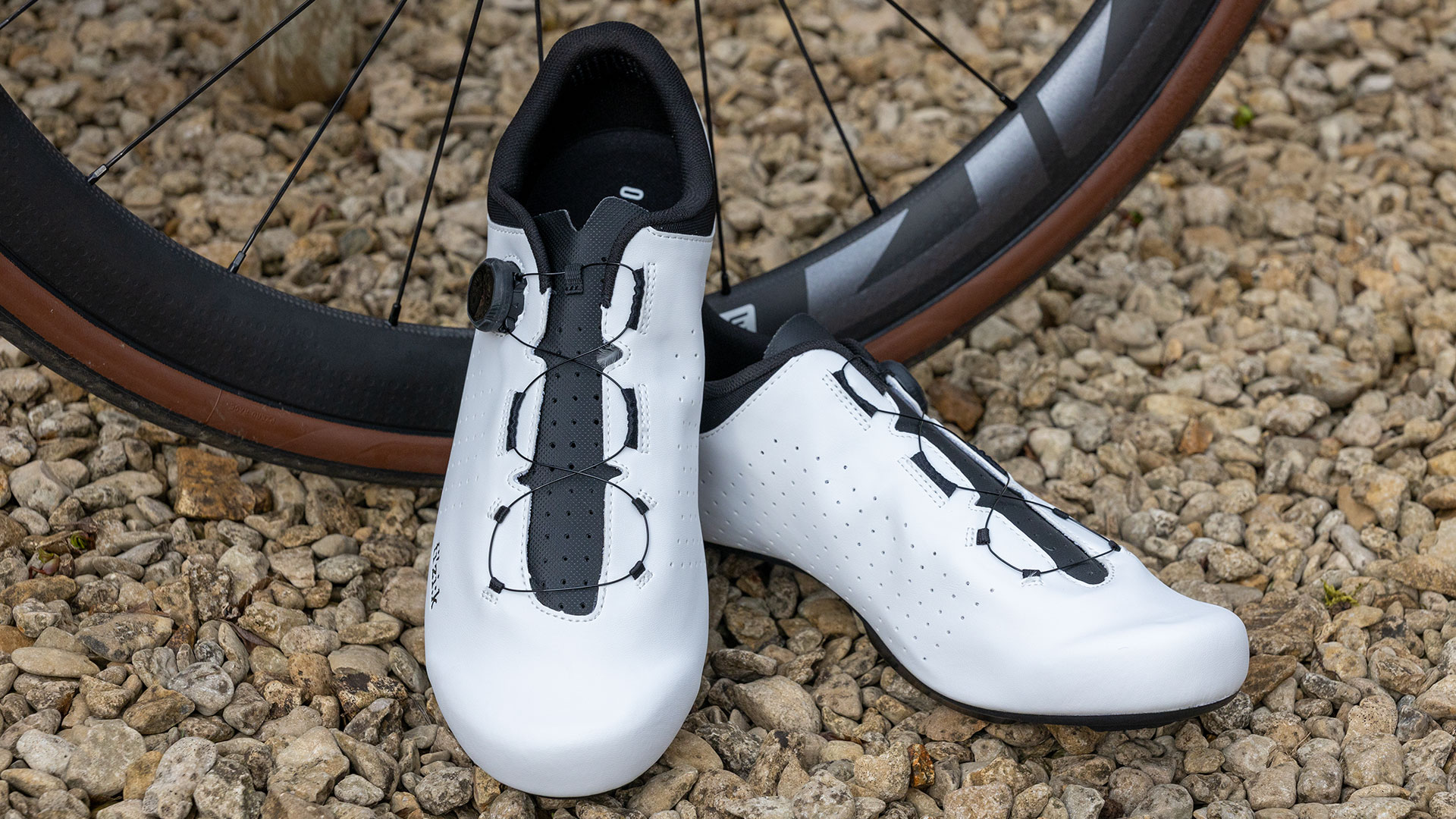 Fizik Vento Omna Wide shoe review: Yeti sneakers for those pedalling on a budget
Fizik Vento Omna Wide shoe review: Yeti sneakers for those pedalling on a budgetBroadly recommended for those of us with flipper feet
By Simon Fellows Published